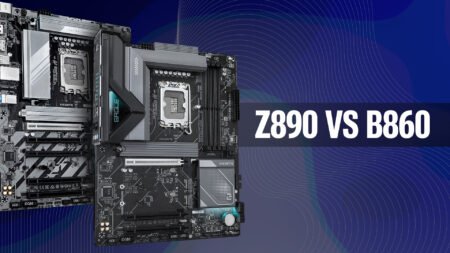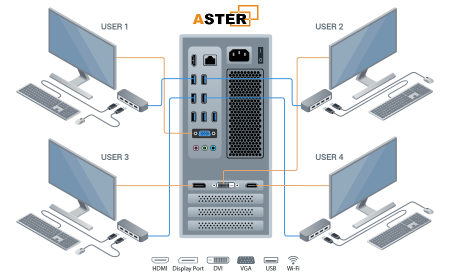In the digital age, technology plays a crucial role in the education sector, enhancing both teaching and learning experiences. However, one of the biggest challenges faced by schools in India is the cost of setting up and maintaining computer labs. With budget constraints and a growing demand for digital education, schools need cost-effective solutions to ensure every student has access to a computer. ASTER software has emerged as a revolutionary solution, enabling Indian schools to save up to 20% on computer purchases while maintaining efficiency and performance.
Understanding ASTER Software
ASTER (Advanced System for Terminal Equipment) is a multi-user software solution that allows multiple users to share a single computer while working independently. Unlike traditional methods that require a dedicated CPU for each user, ASTER software enables one computer to function as multiple workstations, significantly reducing the need for additional hardware.
How ASTER Works
ASTER software works by dividing the resources of a single computer—such as CPU, RAM, storage, and GPU—among multiple users. Each user has their own monitor, keyboard, and mouse, but they share the same central processing unit (CPU). The software efficiently manages these resources, ensuring smooth performance for all users.
To set up ASTER in a school environment, administrators need to install the software on a computer with sufficient processing power. Additional monitors, keyboards, and mice are connected to the same system, creating multiple workstations from a single unit.
The Cost-Saving Benefits of ASTER for Indian Schools
- Reduction in Hardware Costs
- Traditional computer labs require a separate CPU for each student, which significantly increases costs.
- With ASTER, a single high-performance CPU can support multiple users, reducing the number of computers required.
- Schools can save up to 20% on hardware expenses by reducing the need for multiple processors, motherboards, and power supplies.
- Lower Maintenance and Operational Costs
- Fewer computers mean lower maintenance costs, as IT staff have fewer machines to manage and troubleshoot.
- The software minimizes hardware failure risks by reducing the number of moving components such as cooling fans and hard drives.
- Energy consumption is significantly lower, reducing electricity bills for schools.
- Efficient Utilization of Resources
- Schools often struggle with underutilized computers, especially when students are working on simple tasks.
- ASTER allows schools to maximize their existing hardware by enabling multiple students to use the same system.
- This ensures better utilization of school budgets and IT resources.
- Eco-Friendly Solution
- By reducing the number of computers needed, ASTER contributes to a lower carbon footprint.
- Schools consume less energy, leading to lower greenhouse gas emissions.
- Fewer discarded computers mean less electronic waste, making ASTER a sustainable solution for digital education.
Implementation in Indian Schools
Many Indian schools, particularly those with budget constraints, have already started implementing ASTER software in their computer labs. Schools that have adopted ASTER report significant savings on both initial setup costs and long-term operational expenses.
Case Study: A Government School in Delhi
A government school in Delhi faced challenges in providing adequate computing resources to students. With a limited budget, the school could only afford 10 computers, which were not sufficient for all students to practice their digital skills. By implementing ASTER software, the school was able to set up 30 workstations using just 10 computers, enabling more students to access computers simultaneously. The school saved approximately 18% on hardware costs and 25% on electricity expenses.
Challenges and Considerations
While ASTER offers numerous benefits, schools must consider the following factors before implementation:
- Hardware Requirements
- ASTER requires a high-performance CPU with sufficient RAM and storage to handle multiple users simultaneously.
- Schools must ensure they invest in high-quality components to prevent performance issues.
- Software Compatibility
- Some educational software programs may not be fully optimized for a multi-user environment.
- Schools need to test their existing software with ASTER to ensure smooth operation.
- Training for IT Staff and Teachers
- Proper training is required to manage and troubleshoot the ASTER setup.
- Teachers and IT administrators should be educated on how to optimize the system for better performance.
Future of ASTER in Indian Education
With the increasing demand for digital education, ASTER software has the potential to become a standard solution for schools across India. As technology evolves, ASTER is expected to support more advanced computing applications, making it even more beneficial for educational institutions.
Government and Private Sector Support
The Indian government’s push for digital education under initiatives like Digital India and Atal Tinkering Labs aligns with ASTER’s cost-saving benefits. If supported through grants and subsidies, more schools can adopt this technology, bridging the digital divide in rural and urban areas.
Conclusion
ASTER software is revolutionizing the way Indian schools manage their computer resources. By enabling multiple students to use a single computer efficiently, schools can save up to 20% on computer purchases, reduce operational costs, and promote eco-friendly computing. As more educational institutions embrace ASTER, India’s digital education landscape will become more accessible, efficient, and sustainable.











